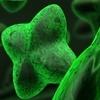ERC Stories - Tiny fossils can lead to huge gains in understanding
"The ocean floor is a graveyard," says Dr Heather Stoll. "Most mud at the bottom is made of tiny micro-fossils in a thick accumulation of layers. By digging deeper, researchers can get to older ones – with the result that we can work on accurately dated samples that are up to 60 million years old." Many of these tiny fossils are the remains of calcifying algae, with an inner 'skeleton’ of calcite (a type of calcium carbonate), or ‘diatoms’, with cell walls made of silica – more familiar to us as the semi-precious stone opal. "The opal is like a glass jar," explains Dr Stoll. "Inside is a thin lining made of organic molecules produced by the algae in photosynthesis. The fossil can protect the organic matter inside for millions of years, like a test tube of samples reflecting the conditions in which the algae lived and died." Dr Stoll’s research group extracts the organic matter isolated inside these tiny 'shells' and studies the contents – looking for boron, calcite, isotopes of carbon, such as 12C and 13C, and isotopes of oxygen, such as 18O and 16O. Evolution: adapting to changing climates Evidence suggests the way such algae absorb carbon from sea water has changed over time. Today, algae can actively ‘pump’ bicarbonate (HCO3) into its cells, if local acidity or carbonate concentration requires it. But it seems that the populations living 60 million years ago absorbed by diffusion alone. "We are working to find new biochemical indicators for these changes and looking to see when these abilities evolved," says Dr Stoll. By relating past changes in carbon dioxide (CO2) levels – much higher at the time the oldest fossils were formed – to how algae adapted, this research should lead to a better understanding of the carbon cycles of the atmosphere and ocean. The algae's response to environmental changes, and their role in the carbon cycle, has implications for how changes in the climate, atmosphere and ocean will interact in the future. "The project started at the end of 2009, and our results so far relate to calibration of the new biochemical indicators for these pathways of carbon uptake," says Dr Stoll. For example, boron is one of the chemicals that show when cells had to adapt from diffusing naturally due to lower concentrations of CO2. "The next step is to measure the speed of adaptation to different changes in the environment," she continues. "We are filling in the fossil record from both ends so as to focus on precisely when and how algae adapted to change." "ERC funding has meant the difference between night and day for this project," acknowledges Dr Stoll. "The grant has helped build a research group that includes a microfossil expert to identify the cells, and a biologist to grow algae cultures. A multidisciplinary team can lead to new insights and solutions." The project is also growing algae under different CO2 and acidity conditions in the laboratory. By combining these approaches the researchers hope to answer questions such as: "Do algae have a CO2 concentration threshold which switches off the 'pump'? Could this affect which species are more successful? And could this affect the ocean’s ability to absorb CO2 from the atmosphere in future?" - Source: Dr Heather Stoll - Project coordinator: Universidad de Oviedo, Spain - Project title: Precedents for algal adaptation to atmospheric CO2: New indicators for eukaryotic algal response to the last 60 million years of CO2 variation - Project acronym: PACE - PACE project website - FP7 funding programme (ERC call): Starting Grant 2009 - EC funding: EUR 1.8 million - Project duration: Five years Glossary Diatoms – a kind of algae, one of the common types of marine plankton. They are usually unicellular and differ from other algae by including a silica cell wall which can be preserved as micro-fossils. Opal – a silicate, or type of stone, formed inside the cell wall of diatom algae. Calcite – a form of calcium carbonate, common in the shells of marine organisms and therefore a major component of limestone and marble. Boron – a soluble element that is found only in small quantities in the atmosphere, but plays an important role in the cell walls of plants. Isotopes – different 'versions' of the same element that have the same number of protons in their atoms, but different numbers of neutrons. For example, 13C is an isotope of carbon (with 13 neutrons in its atomic nucleus) produced by living things, as opposed to the more common 12C isotope whose atoms contain only 12 neutrons.



